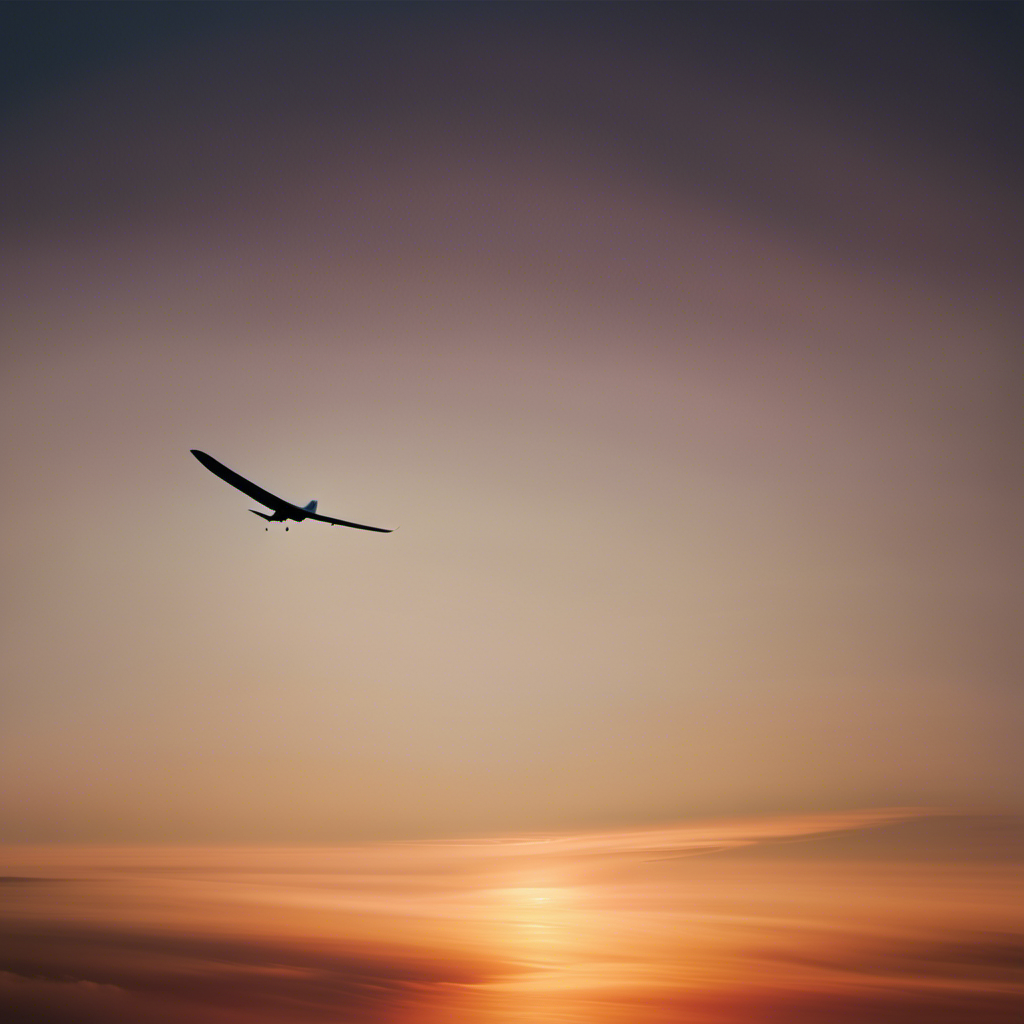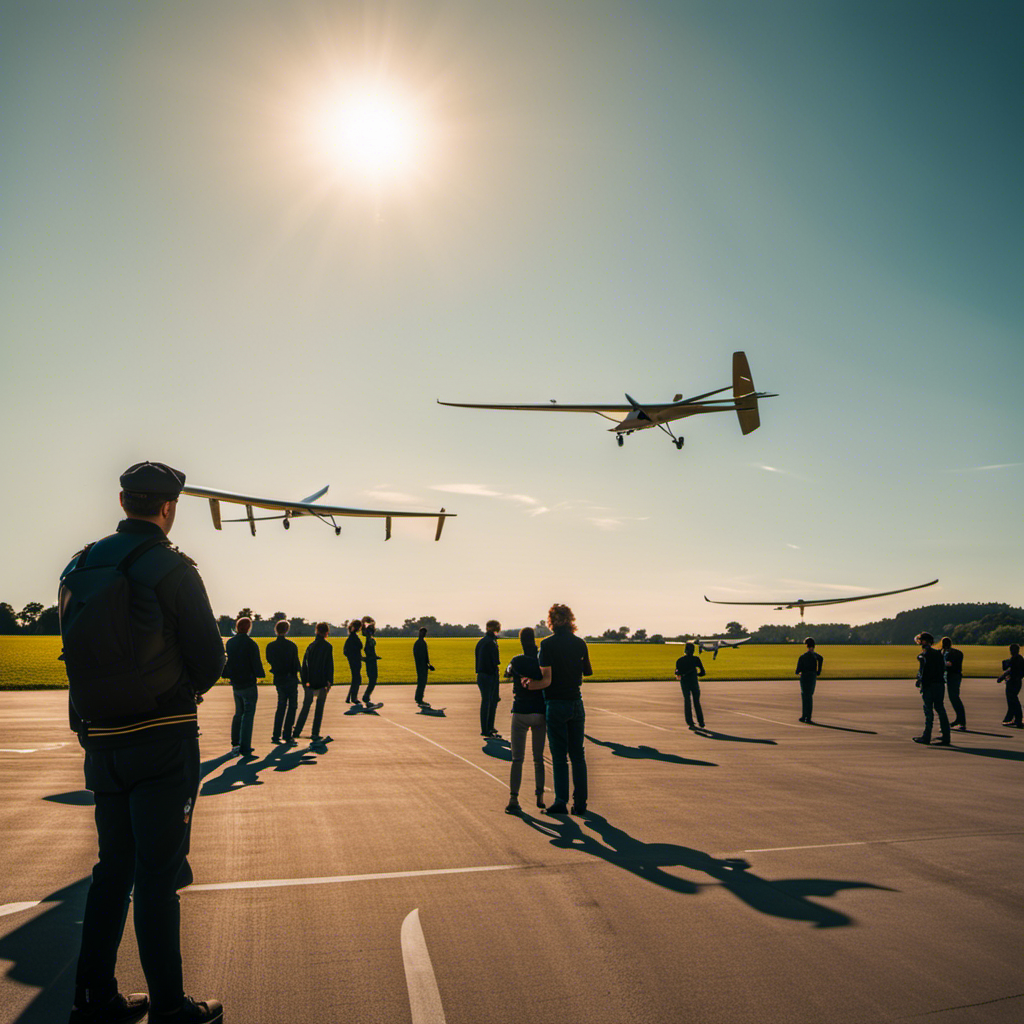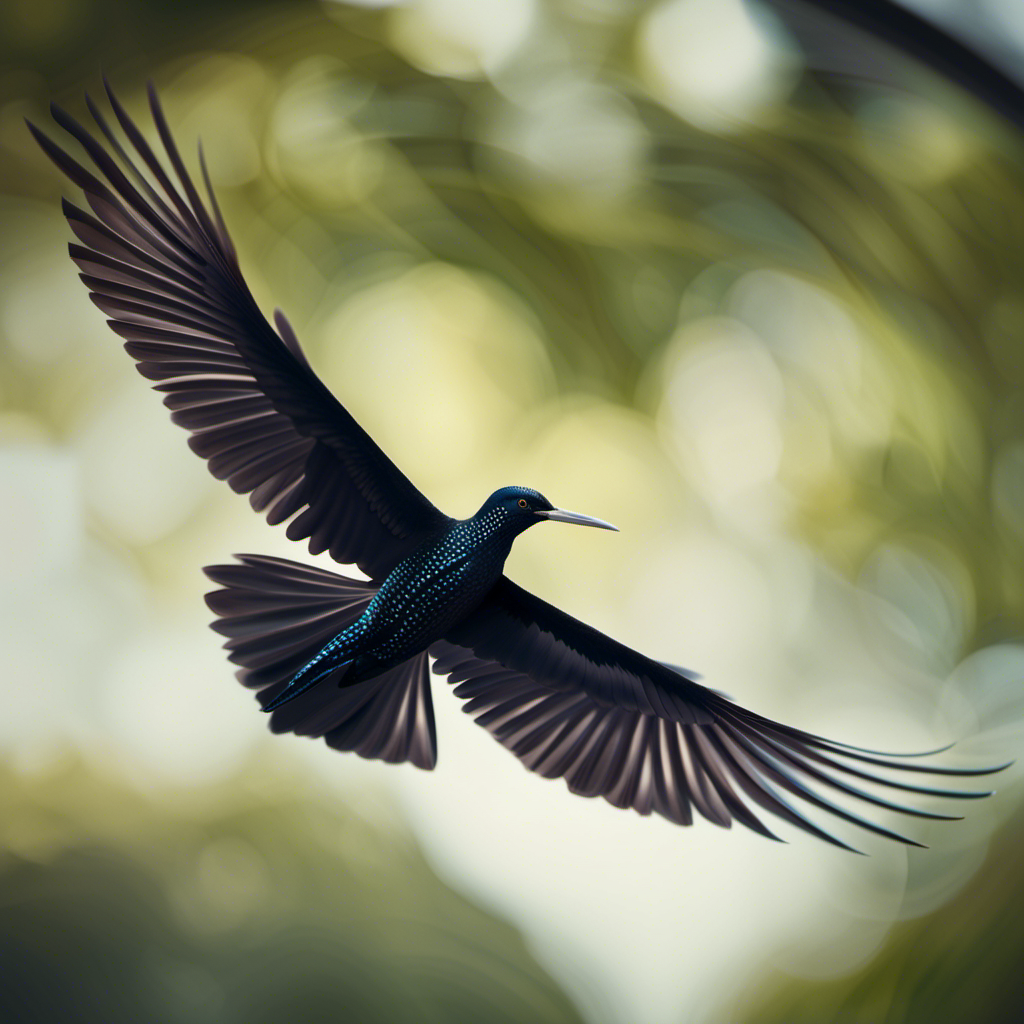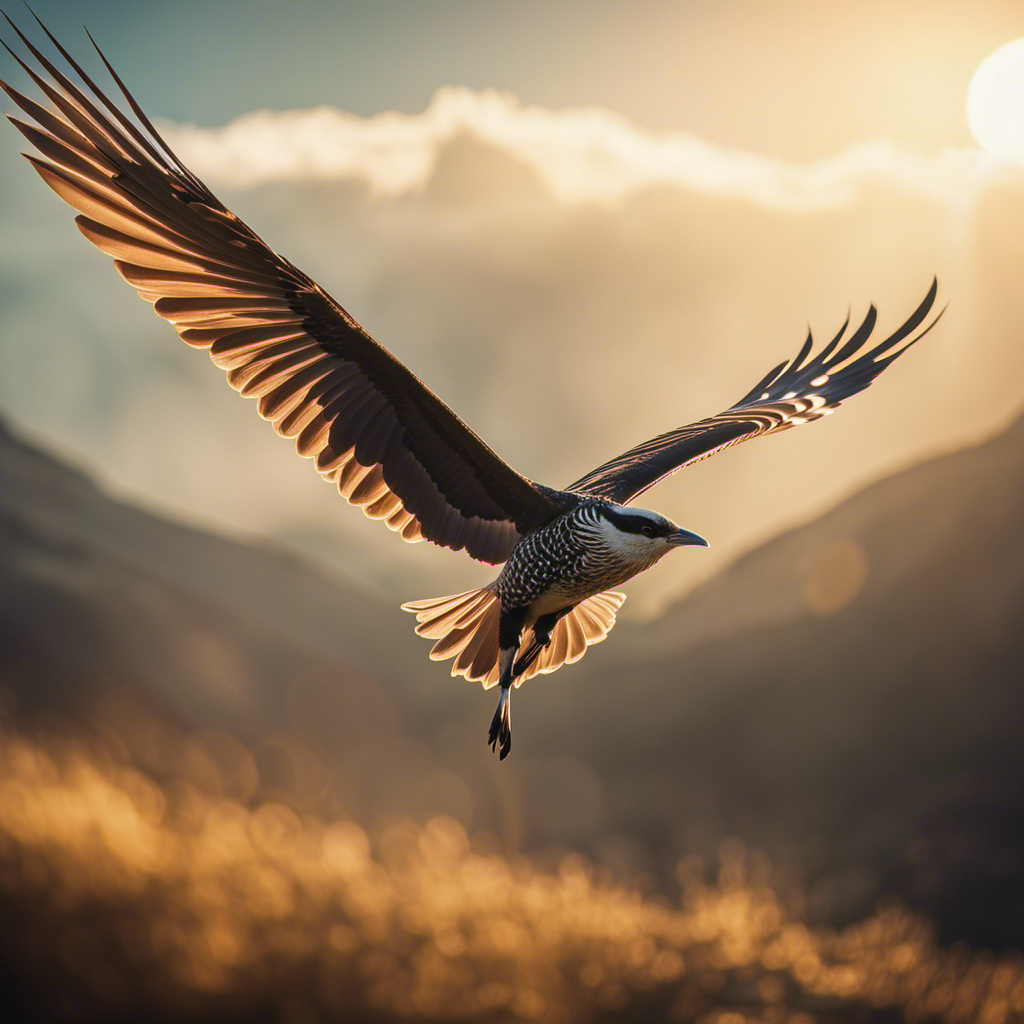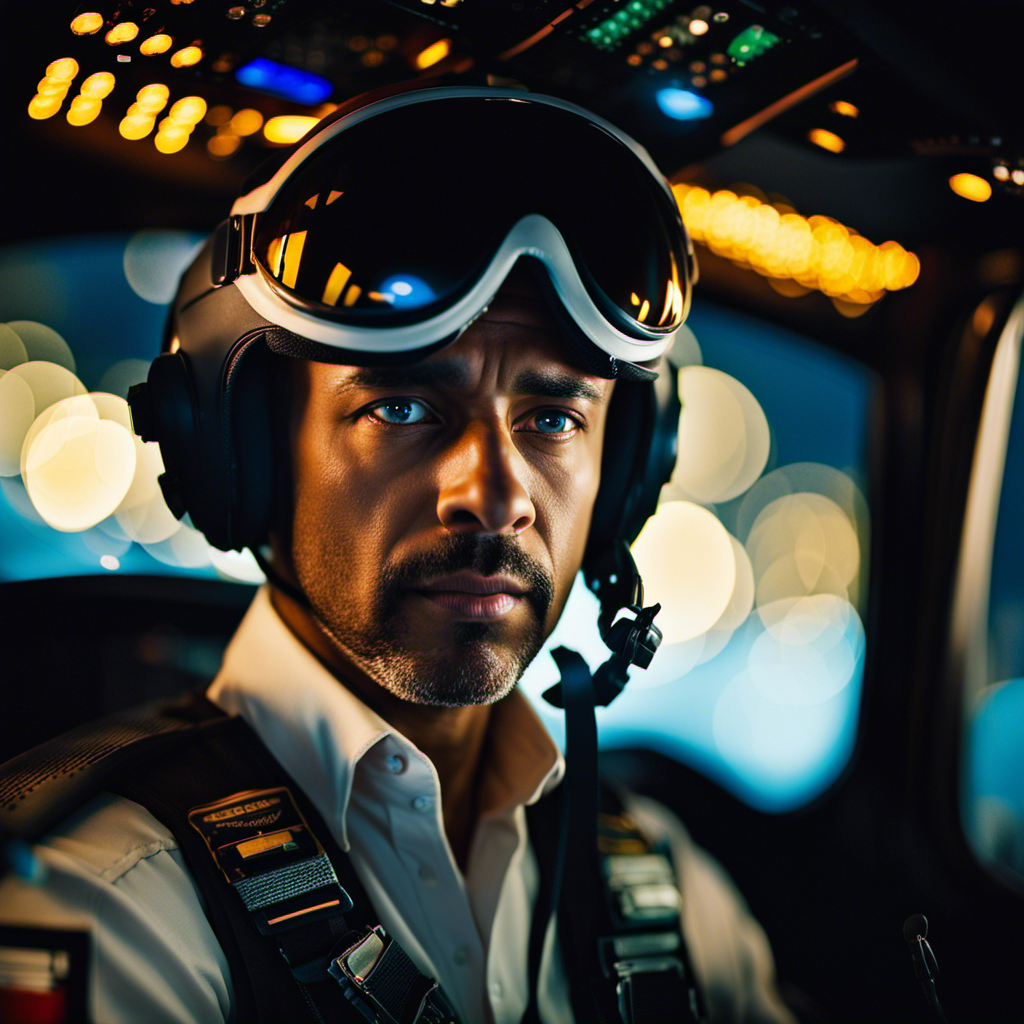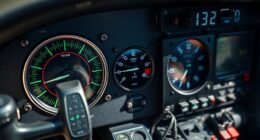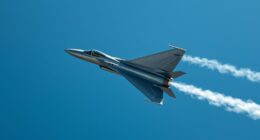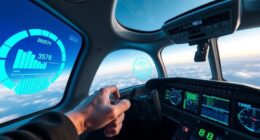Can you imagine soaring through the sky, feeling unrestricted and weightless? Imagine the excitement of achieving the record for the longest time spent in a glider, effortlessly maneuvering through the air currents.
In this article, we will guide you through the technicalities and intricacies of achieving this feat. You will learn to understand the basics of aerodynamics, choose the perfect glider, master launch techniques, and navigate the weather.
Prepare to optimize your flight path, maintain your glider, and keep yourself physically and mentally sharp.
Let us embark on this journey together, and unlock the secrets of extended glider flight.
Key Takeaways
- Ascend to higher altitudes to utilize potential energy.
- Utilize smooth, controlled turns to minimize energy loss.
- Position glider to exploit thermals and updrafts for additional lift.
- Regularly inspect wings, control surfaces, parachute, landing gear, and safety equipment for maintenance.
Understand the Basics of Aerodynamics
To achieve the longest glider flight time, you need to understand the basics of aerodynamics.
Aerodynamics is the study of how air flows around objects and affects their motion.
When it comes to gliders, there are several key factors to consider.
First, you must understand the concept of lift, which is the force that keeps the glider in the air.
Lift is generated by the shape and angle of the glider’s wings.
By optimizing the design of the wings and adjusting the angle of attack, you can maximize lift and extend your flight time.
Additionally, minimizing drag is crucial for a longer flight.
Drag is the resistance that air exerts on the glider as it moves through the sky.
By streamlining the glider’s shape and reducing unnecessary protrusions, you can reduce drag and increase efficiency.
Understanding these principles of aerodynamics will help you choose the right glider for achieving the longest flight time.
Choose the Right Glider
Picking the correct glider is essential for maximizing your flight duration. The glider you choose should be lightweight, allowing it to stay aloft for longer periods of time. Look for a glider with a high aspect ratio, which means it has long and narrow wings. This design reduces drag and increases lift, helping you stay in the air for longer.
Additionally, consider the glider’s wing loading, which is the weight of the glider divided by the wing area. A lower wing loading will allow for slower flight speeds and better thermalling capabilities. By carefully selecting the right glider, you can greatly increase your chances of achieving longer flight times.
Now let’s move on to mastering launch techniques to further enhance your glider’s performance.
Master Launch Techniques
Improve your glider’s performance by mastering launch techniques. Achieving a successful launch is crucial for maximizing your flight time. To ensure a strong start, remember to follow these key steps:
- Position yourself correctly: Align your body with the wind direction to take advantage of the available lift.
- Use the right amount of force: Apply a steady, controlled push to launch your glider smoothly into the air.
- Maintain proper balance: Keep your body centered and your weight distributed evenly to maintain stability throughout the launch.
By mastering these launch techniques, you will experience a sense of confidence and control as you soar through the sky, maximizing your glider’s performance.
Transitioning seamlessly into the next section, learning to read the weather will further enhance your ability to achieve longer flight times.
Learn to Read the Weather
When learning to read the weather, you’ll be able to predict wind patterns and make informed decisions for optimal flying conditions. By analyzing weather reports and observing the sky, you can determine the strength and direction of the wind, which is crucial for a successful glider flight.
Look for indicators such as cloud formations, windsocks, and flags to gauge the current conditions. Pay attention to the wind speed and its effect on thermal activity, as this will affect your glider’s ability to gain altitude and stay aloft.
Understanding how different weather systems interact and how they influence air currents will allow you to plan your flight accordingly. With this knowledge, you can optimize your flight path by strategically choosing areas with favorable wind conditions and avoiding areas with potential turbulence or strong headwinds.
Optimize Your Flight Path
To maximize your flight efficiency, it’s important to strategically select areas with favorable wind conditions and avoid turbulent or headwind-prone locations. By optimizing your flight path, you can significantly extend your glider’s flight time.
Start by analyzing weather patterns and wind forecasts to identify areas with prevailing tailwinds. These tailwinds will provide an extra boost to your glider, allowing you to cover more distance with less effort.
Additionally, consider the topography of the land below. Look for areas with thermal activity, such as hills or mountains, as they can generate strong updrafts that will help keep your glider aloft.
Practice Efficient Energy Management
When it comes to maximizing your glider’s performance, it is crucial to master speed-to-fly techniques, minimizing drag, and energy conservation strategies. By employing these key points, you can optimize your flight path and achieve longer glider flight times.
Utilize efficient energy management techniques to make the most out of every flight and ensure you are always operating at peak efficiency.
Speed-to-fly techniques
If you want to maximize your glider flight time, you’ll need to learn speed-to-fly techniques. These techniques involve analyzing the wind conditions and adjusting your airspeed accordingly to achieve the most efficient flight.
By flying at the optimum speed, you can minimize the amount of energy required to maintain altitude and extend your time in the air. To determine the speed-to-fly, you must consider the glider’s polar curve, which shows the relationship between airspeed and sink rate. By flying at the speed that corresponds to the lowest sink rate, you can maximize your glider’s performance.
Speed-to-fly techniques are crucial for achieving longer flight times and can significantly improve your overall gliding experience. By mastering these techniques, you will be able to soar through the sky with greater efficiency, reducing the need for constant altitude adjustments and conserving your energy for longer flights.
Now, let’s delve into the next section about minimizing drag.
Minimizing drag
Minimizing drag is essential for maximizing the efficiency of your glider flight. To achieve the longest flight time, you need to understand the factors that contribute to drag and take steps to minimize them.
First, reduce the surface area exposed to the airflow by retracting your landing gear and closing any unnecessary openings. Smooth out any rough surfaces and ensure proper alignment of all components. Additionally, streamline your glider by removing any unnecessary accessories or modifications. Make sure your control surfaces are properly balanced and aligned to minimize induced drag. Utilize efficient airfoil shapes and optimize the wing’s aspect ratio to reduce drag.
By minimizing drag, you can increase your glider’s performance and extend your flight time.
Now, let’s explore energy conservation strategies to further enhance your glider flight.
Energy conservation strategies
To further enhance the longevity of your glider flight, let’s delve into energy conservation strategies. By effectively managing and conserving the energy within your glider, you can extend your flight time and increase your chances of achieving the longest flight possible. Here are some key techniques to consider:
-
Optimal Altitude Control:
-
Ascend to higher altitudes to take advantage of potential energy.
-
Descend gradually to convert potential energy into kinetic energy.
-
Efficient Maneuvering:
-
Utilize smooth, controlled turns to minimize energy loss.
-
Avoid unnecessary maneuvers that result in increased drag.
-
Strategic Airflow Utilization:
-
Position your glider to exploit thermals and updrafts for additional lift.
-
Stay aware of wind patterns to optimize your flight path.
By implementing these energy conservation strategies, you can maximize your glider’s endurance and enhance your chances of achieving an extended flight time.
Now, let’s explore how to maintain your glider for optimal performance.
Maintain Your Glider
Make sure you’re regularly checking and maintaining your glider to ensure the longest flight time possible. A well-maintained glider not only improves performance but also minimizes the risk of accidents. Here is a table outlining the key areas to focus on during maintenance:
| Maintenance Area | Frequency | Actions Required |
|---|---|---|
| Wing Inspection | Pre-flight | Check for any damage, loose parts, or signs of wear. |
| Control System | Pre-flight | Verify the smooth movement and proper tension of all control surfaces. |
| Parachute | Annually | Inspect for any tears, worn-out lines, or malfunctioning mechanisms. |
| Landing Gear | Annually | Check for any cracks, corrosion, or loose fittings. |
| Cockpit | Pre-flight | Ensure all instruments, controls, and safety equipment are in working order. |
Regularly maintaining your glider will not only ensure your safety but also contribute to longer flight times. By keeping your glider in top condition, you can focus on perfecting your flying techniques and maximizing your glider’s efficiency.
To achieve the longest flight time possible, it is important to not only maintain your glider but also stay physically fit.
Stay Physically Fit
Staying physically fit is crucial for maintaining your glider and improving your overall flying experience. To achieve the longest glider flight time, you need to ensure that your body is in optimal condition. Here are three key factors to consider:
-
Endurance training: Engage in activities like running, swimming, or cycling to build cardiovascular fitness. This will enhance your stamina and allow you to fly for longer periods without getting fatigued.
-
Strength training: Focus on exercises that target your upper body, core, and legs. Strengthening these muscle groups will improve your control over the glider, making it easier to maneuver and maintain stability during flight.
-
Flexibility exercises: Incorporate stretching and yoga into your routine to increase your range of motion. This will enhance your ability to respond to changing wind conditions and maintain proper body alignment in the cockpit.
By prioritizing your physical fitness, you will be better equipped to handle the demands of glider flying and maximize your flight time.
Transitioning into the next section, let’s now explore how to stay mentally sharp during your flights.
Stay Mentally Sharp
Maintaining your mental sharpness is essential for a successful and enjoyable glider flying experience. To optimize your flight time, it is crucial to stay focused, alert, and make quick decisions. Here are some strategies to keep your mind at its peak performance level:
| Strategies | Benefits |
|---|---|
| Practice mindfulness | Enhances concentration and reduces distractions |
| Engage in mental exercises | Improves cognitive abilities and decision-making skills |
| Get enough sleep | Restores brain function and enhances mental clarity |
Learn from Experienced Glider Pilots
Learning from experienced glider pilots can provide valuable insights and tips to improve your flying skills. These seasoned pilots have honed their techniques and strategies through years of flying, allowing them to achieve longer flight times. By studying their methods, you can gain a deeper understanding of the principles behind gliding and apply them to your own flights.
Experienced glider pilots emphasize the importance of effective weight management. They understand that carrying excess weight can significantly impact the glider’s performance and reduce its efficiency. By carefully analyzing and adjusting the weight distribution within the glider, you can optimize its aerodynamic properties and achieve longer flight times.
Additionally, experienced pilots stress the significance of efficient energy management. They recommend utilizing thermals, updrafts, and other natural air currents to your advantage. By understanding how to locate and utilize these sources of lift, you can extend your flight time and cover greater distances.
Learning from experienced glider pilots is a valuable opportunity to enhance your flying skills. By implementing their insights and tips, you can improve your technique and achieve longer flight times.
Conclusion
In conclusion, achieving the longest glider flight time requires a combination of knowledge, skill, and dedication.
By understanding the principles of aerodynamics and selecting the right glider, you can optimize your flight performance.
Mastering launch techniques and reading the weather will further enhance your chances of success.
Regular maintenance and physical fitness are crucial for maintaining your glider and ensuring optimal performance.
Lastly, learning from experienced glider pilots will provide invaluable insights.
So, like a skilled conductor leading a symphony, you can orchestrate the perfect glider flight and soar through the sky with grace and precision.
